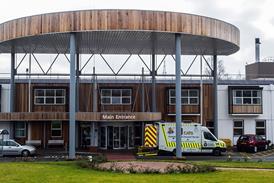Claire Read outlines some approaches that support trusts in tackling the four hour accident and emergency target
In association with

Some ingredients for four hour success:
-
You need the basic conditions in place: “I’ve seen some trusts that have really good operational processes and good strategy, but they don’t have the bare minimum to get in the game of meeting the target,” reports Siva Anandaciva, chief analyst at The King’s Fund. “So you’re talking about the basics of headcount, and capacity of department.”
-
But if you don’t have them, go with a Plan B: “Trusts I’ve seen meet the target, or meet a performance trajectory, have a sense of agency,” says Mr Anandaciva. He points to a trust in the Midlands at which leaders realised they were never going to be able to get enough junior doctors for accident and emergency, and so created an advanced nurse practitioner role to meet some of the need. “It’s working with what you’ve got, but looking at all the professions you can use.”
-
If you’re a commissioner, find incentives for service development: In the short term, Caroline Capell knew expecting staff to provide formal phone advice for GPs may represent a worrying change for some at Luton and Dunstable University Hospital Foundation Trust. So, she incentivised it. “In 2016-17, I developed a commissioning for quality and innovation for GP liaison, and for the paediatric pathway,” says Luton CCG’s assistant director for unplanned care. “That enabled me then to set up those stronger pathways, but also incentivise the hospital and GPs and the community side for the year. Now, we don’t fund them at all – it’s a business as usual pathway.”
-
Get everyone involved: Muses Mr Anandaciva: “It seems crazy to me that some parts of some hospitals still see A&E flow and performance as a function of the performance of the A&E department rather than a function of the whole hospital, the whole system. Really from the clinical director to the chief operating officer, everyone from the matron on the discharge lounge to the porter in an ambulatory care lounge – it’s on them to improve patient flow.”
All that said, Deborah Ward – senior analyst at The King’s Fund – points out the names of the top 20 and bottom 20 of A&E performers generally aren’t consistent. “It’s very variable, and I think it’s a testament to the variety of factors that can impact on your A&E performance. To be able to assess and manage all of them at the same time is perhaps a big ask.”
Tackling the four hour A&E target with a whole system approach
- 1
- 2
 Currently reading
Currently readingEssentials to achieve the four-hour A&E target
- 3






























2 Readers' comments